Getting Started With Platform9 Free Tier on AWS
This article describes the steps to create a free Platform9 account and Kubernetes cluster that is managed by Platform9 Managed Kubernetes (PMK) on AWS cloud.
What you’ll need
- Access to the inbox of a valid email address
- AWS account that meets the Pre-requisites for AWS Native Clusters
If you prefer to interact with AWS and Platform9 through CLIs, check this out.
Create a free Platform9 account
Already have an account? Access your Platform9 instance.
First, navigate to Platform9 signup and provide your email address. Your address will be validated, so please make sure you have access to the inbox.
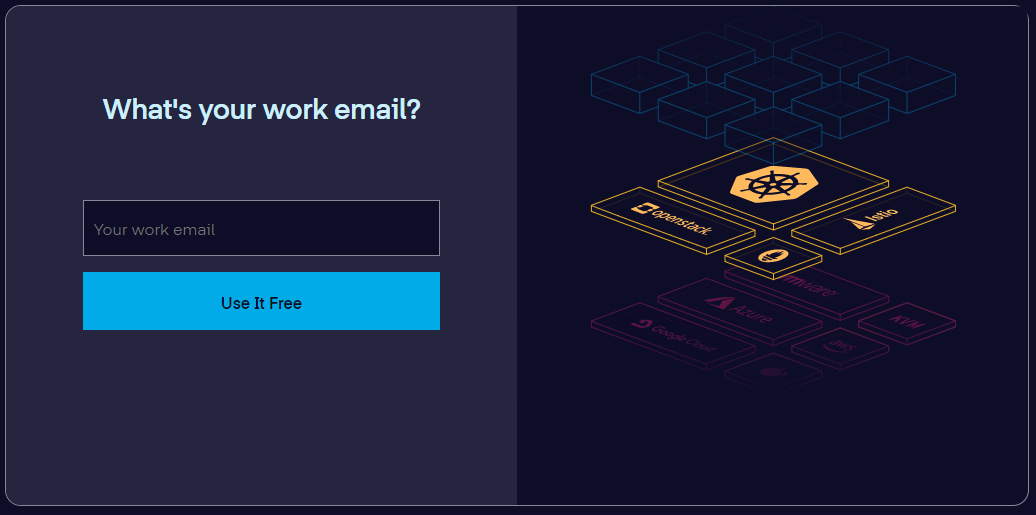
Platform9 – Signup - Email
Then, provide the details of how you would like your account configured. For your account name, try to not use spaces or special characters; your first initial and last name are a good fit.
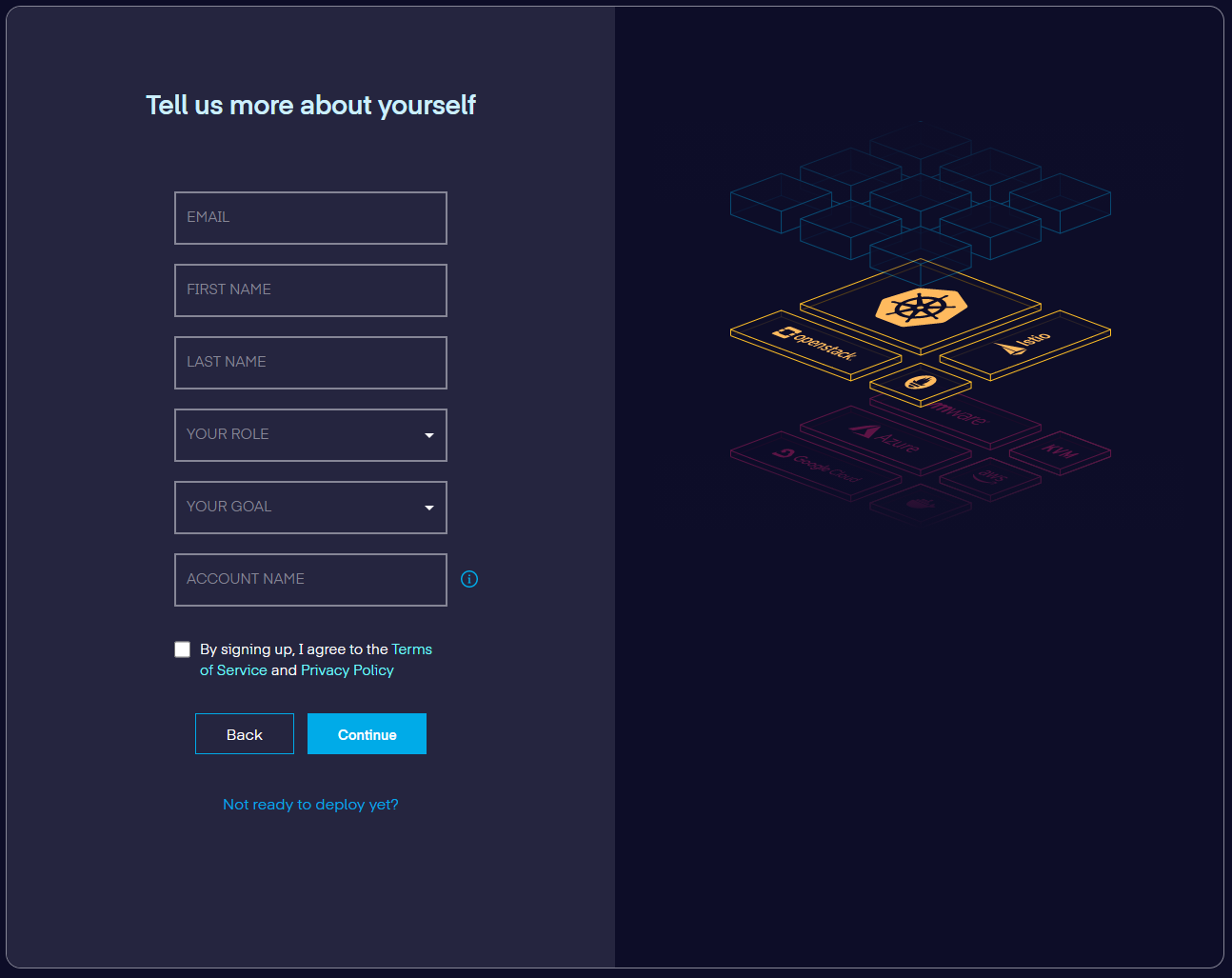
Platform9 – Signup - Account Details
Now, head to your inbox and copy the verification code sent to your email and click the button to finish setup.
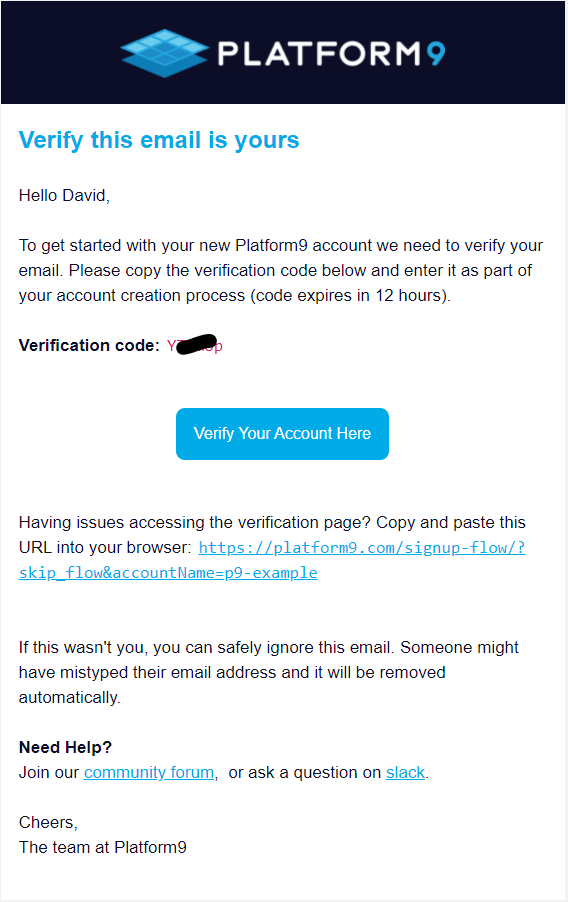
Platform9 – Verification Email
Provide the code along with a password to secure your account.
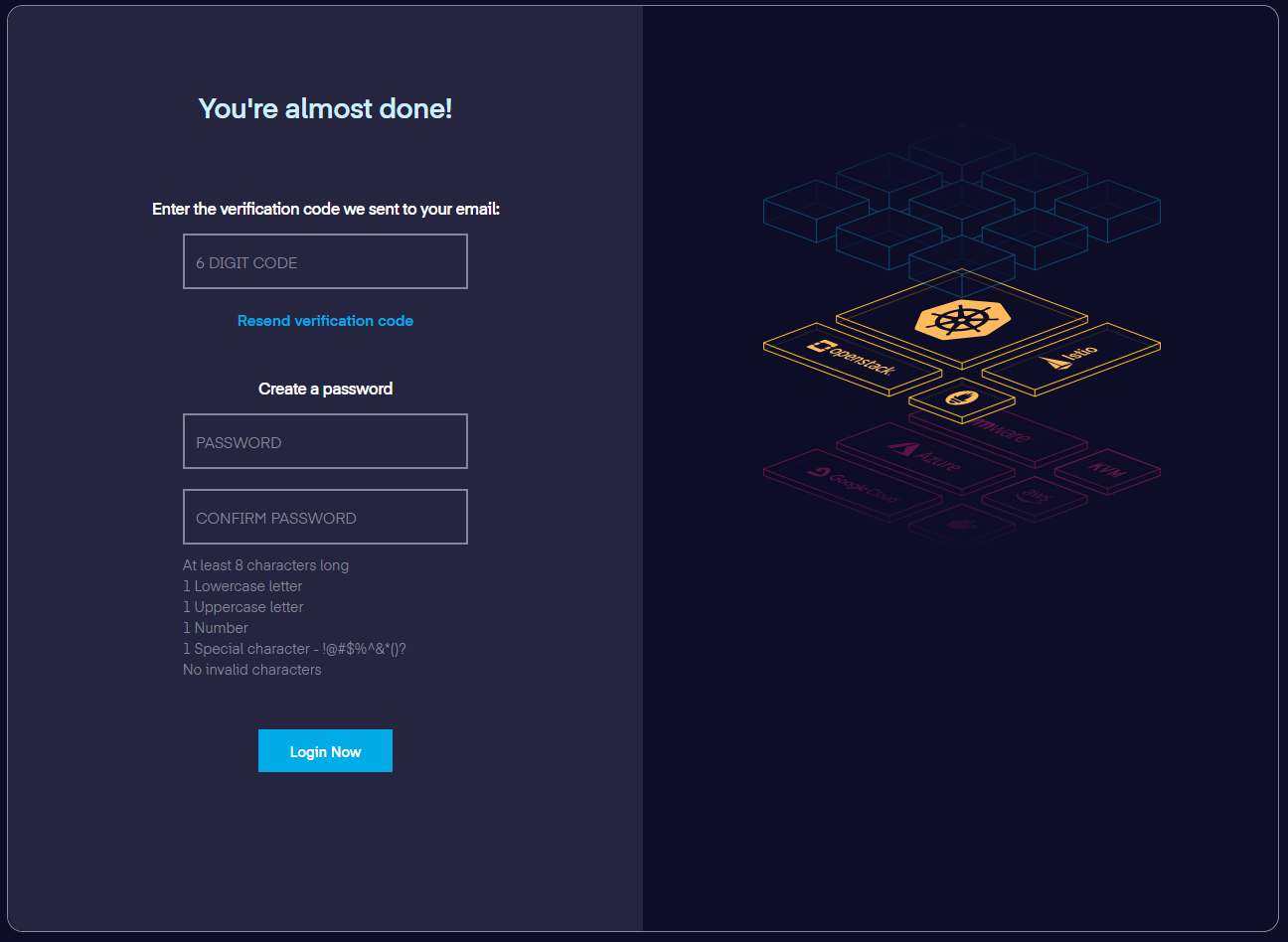
Platform9 – Enter Verification Code
Click the log in button to be directed to your new Platform9 instance
Log in to your Platform9 instance
Log in to your Platform9 account. You can access log in by going to https://platform9.com/login or by going directly to your instance. The address will look similar to: https://pmkft-xxxxxx-xxxxx.platform9.io.
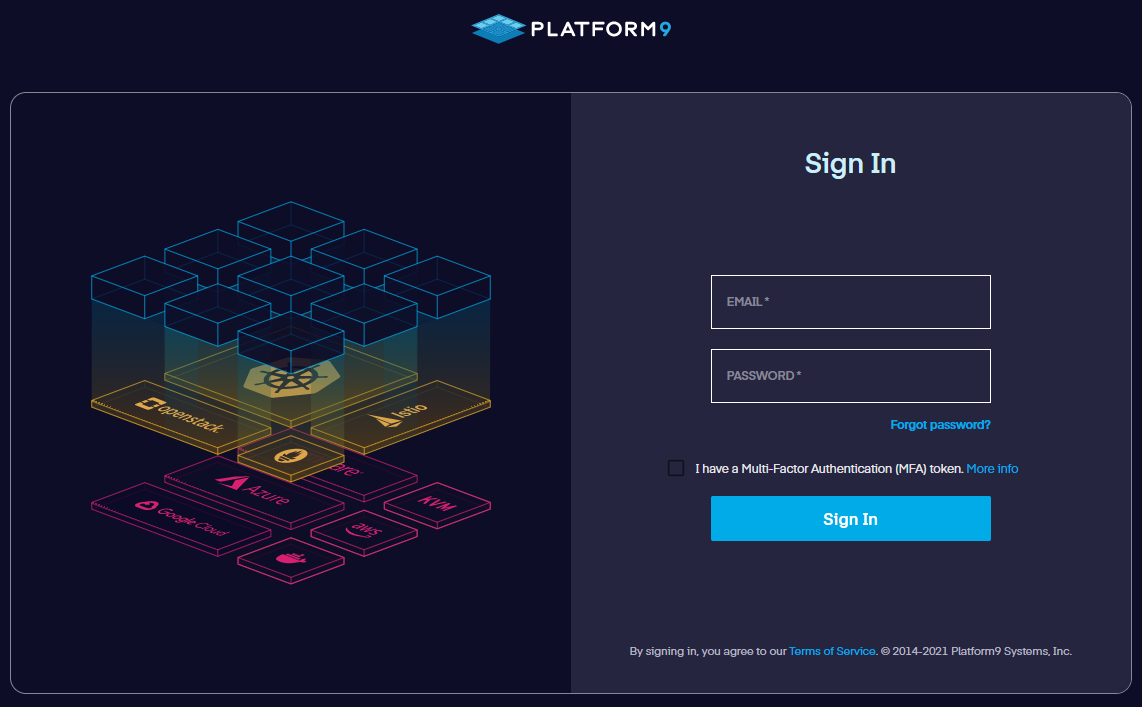
Platform9 – UI - Login
Once you sign in you’ll be directed to your instance’s dashboard. This is a summary of clusters, nodes, pods, and cloud accounts associated with your Platform9 account. Your brand new so of course there is nothing associated… yet!
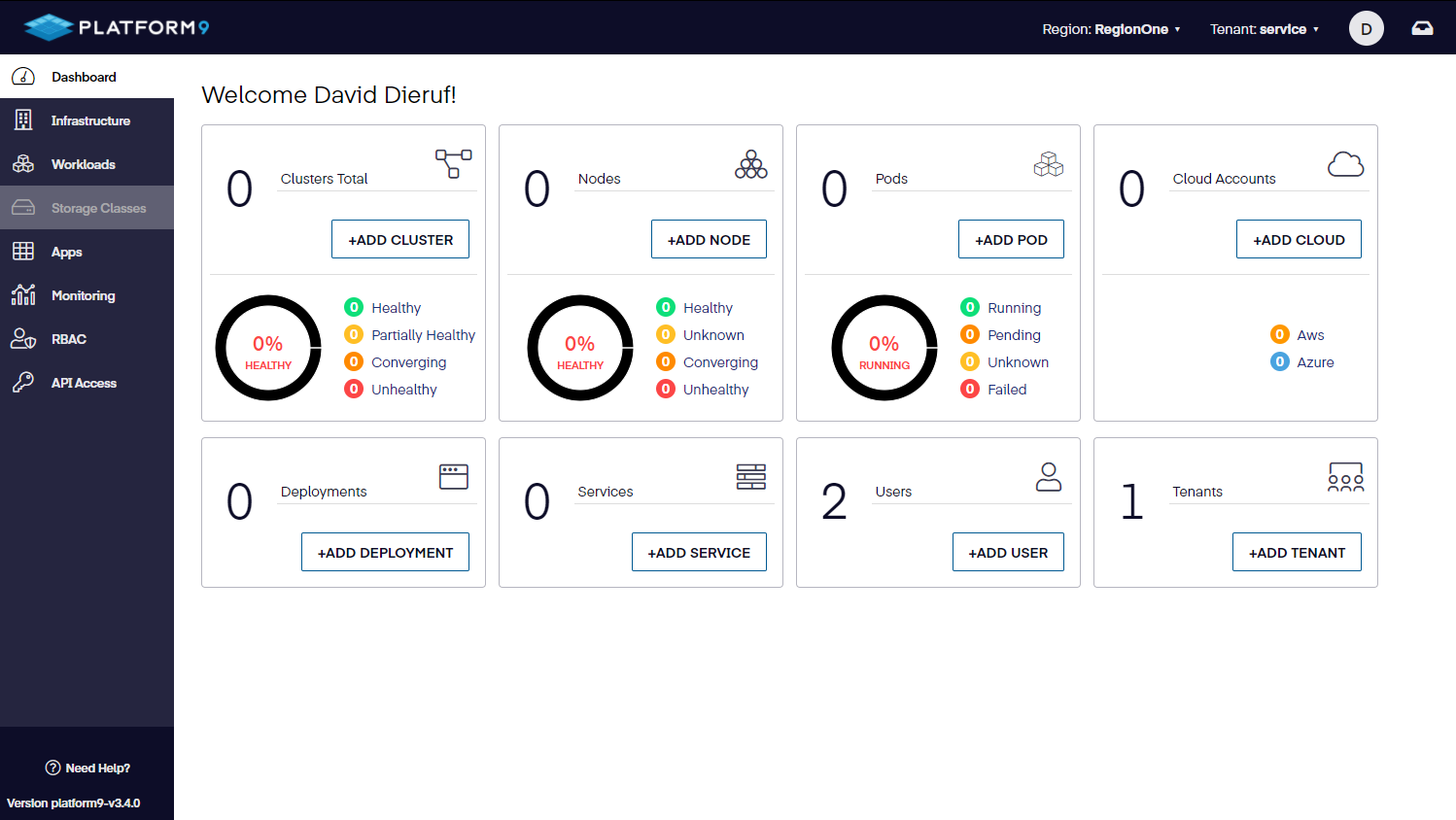
Platform9 – UI - Dashboard
Connect your AWS account with your Platform9 instance
Before associating your account make sure it meets the minimum requirements, read more here. You’ll need a registered route 53 domain name as well as an SSH key-pair.
From your dashboard click the "Add Cloud" button and choose "Amazon Web Services" as your cloud provider type. Name the new provider something memorable like 'my-aws-provider' and provide your AWS key credentials.
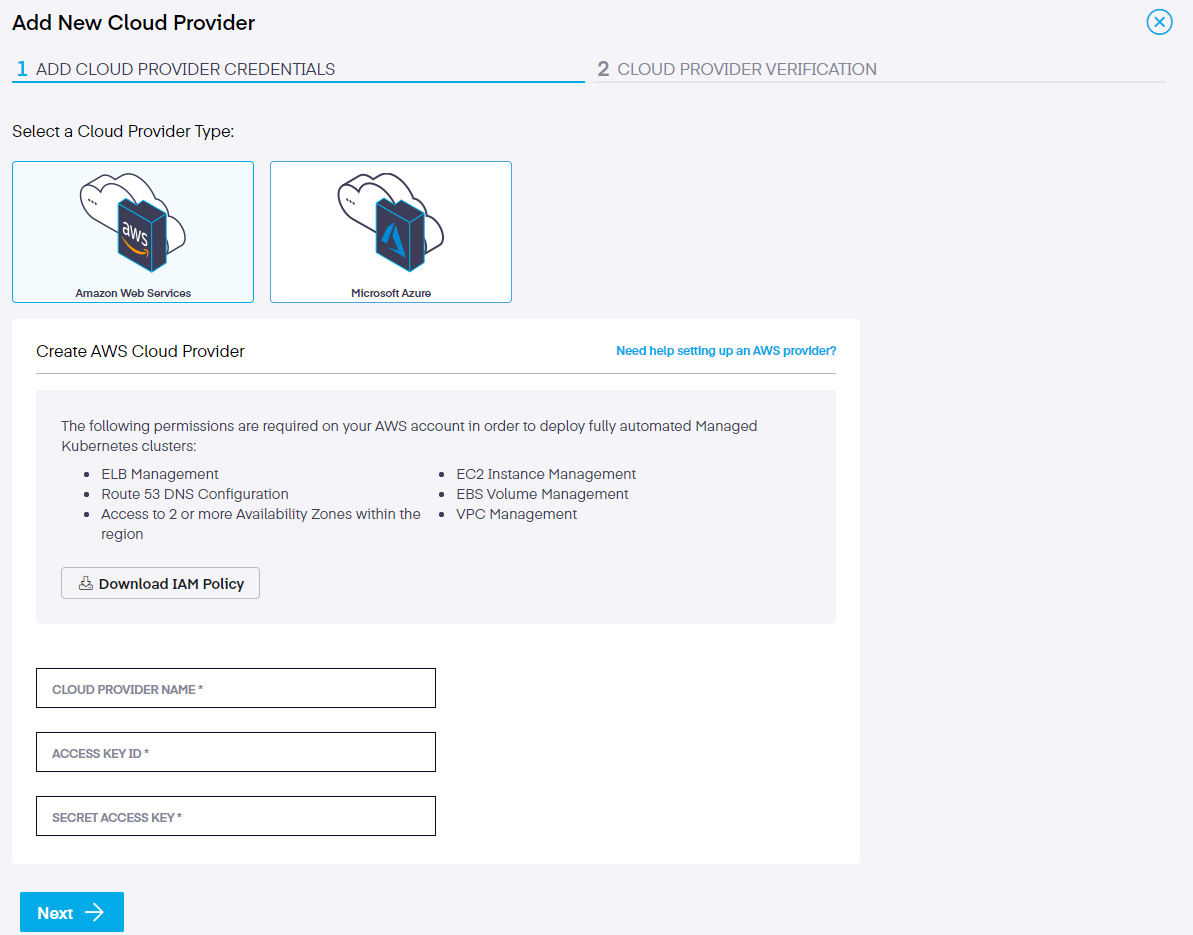
Platform9 – UI - Add New AWS Cloud Provider
When you click "Next" your AWS account will be validated for correct permissions.
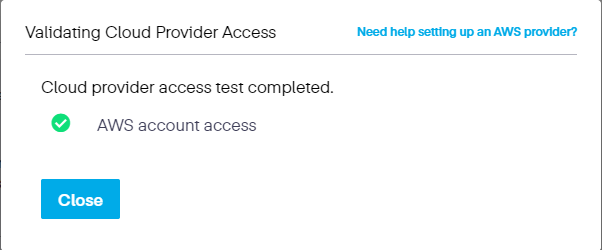
Platform9 – UI - AWS - Validating Cloud Provider Access
Once validated, choose the AWS region, route name, and SSH key-pair to use when creating your new cluster. As you choose a region, your routes within that region will be loaded automatically.
In order to route traffic to your cluster, a valid domain name must be used.
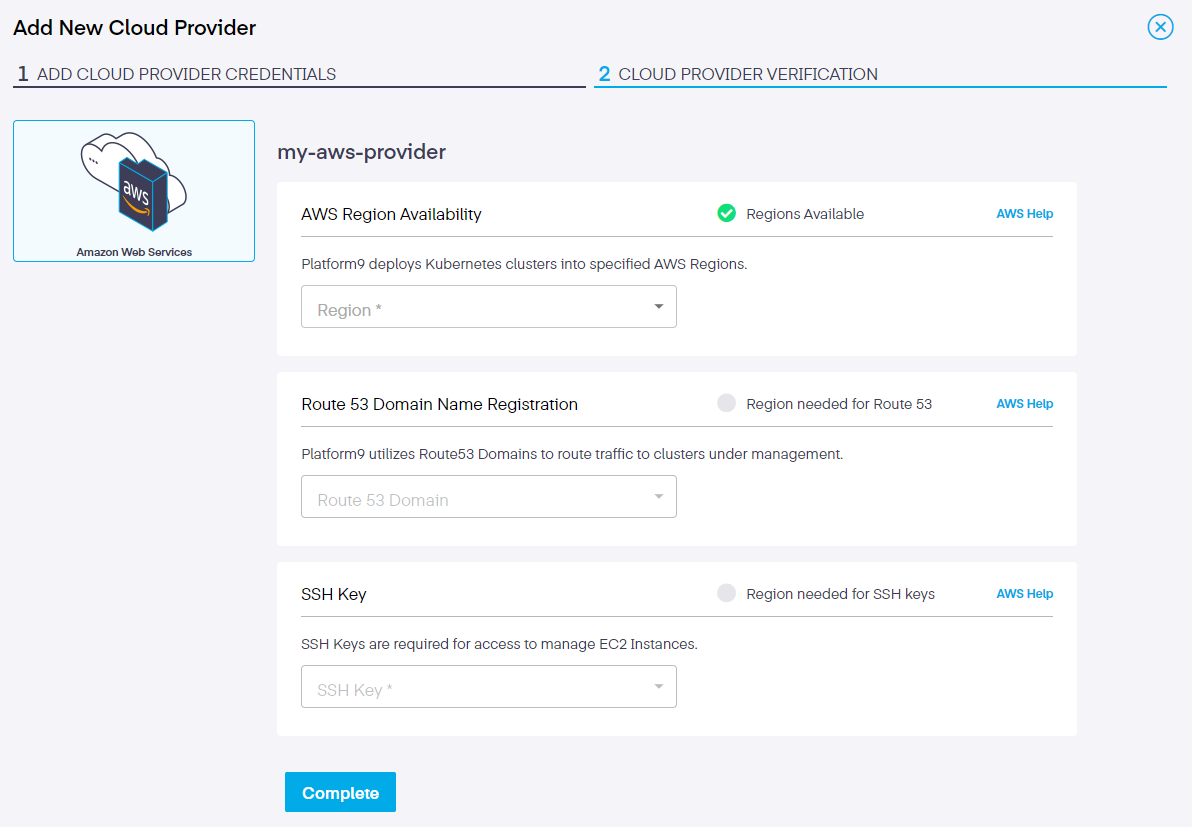
"Complete" to create your new cloud provider and be directed back to the cloud providers listing.
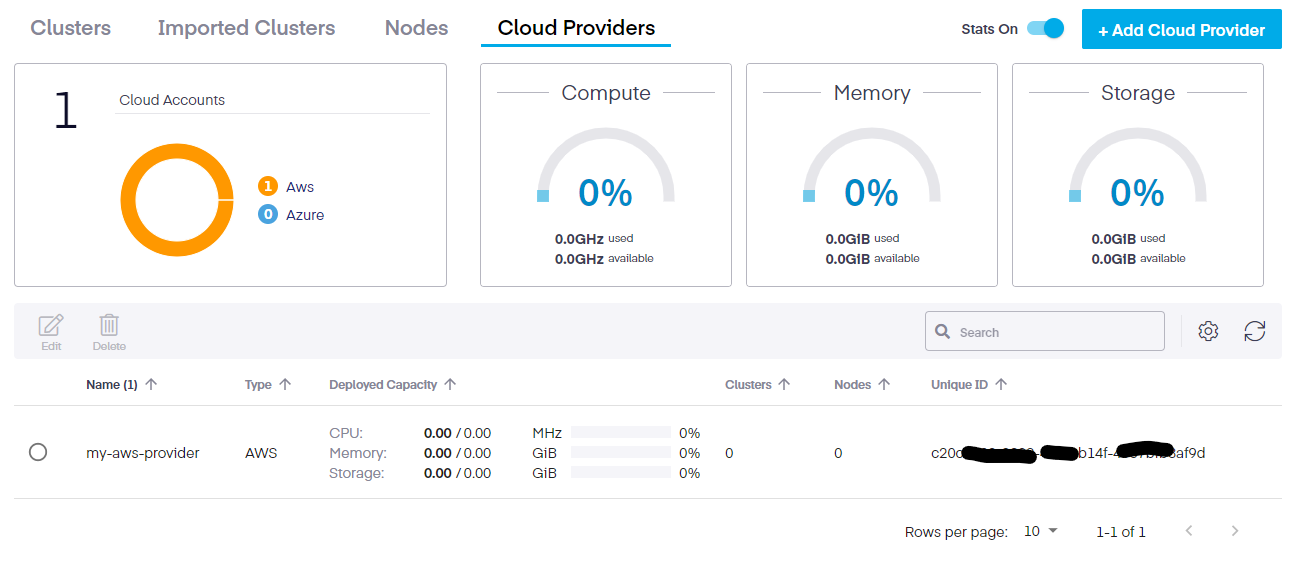
Create a simple one-click cluster
From your dashboard, click the "Add Cluster" button and choose "Amazon Web Services" as your infrastructure provider. Choose the "One-Click Cluster" button to get started.
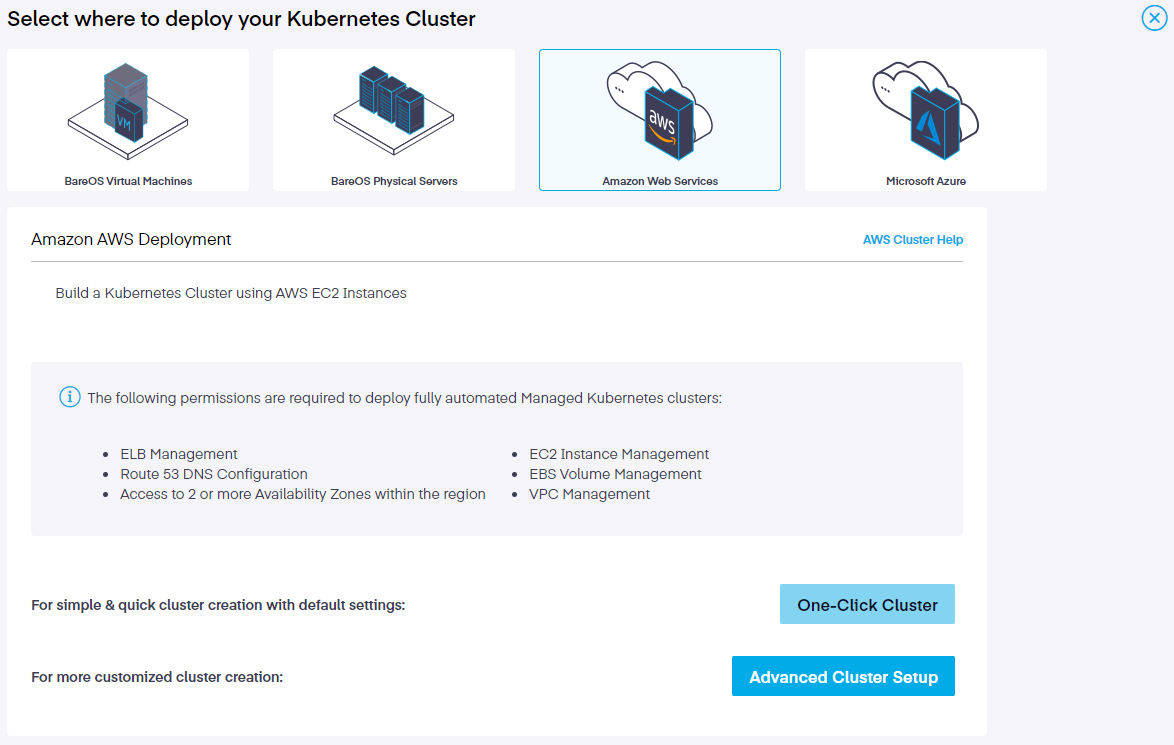
Name your cluster something memorable like "my-aws-cluster" and choose the appropriate values to tell the Platform9 system where to create the cluster.
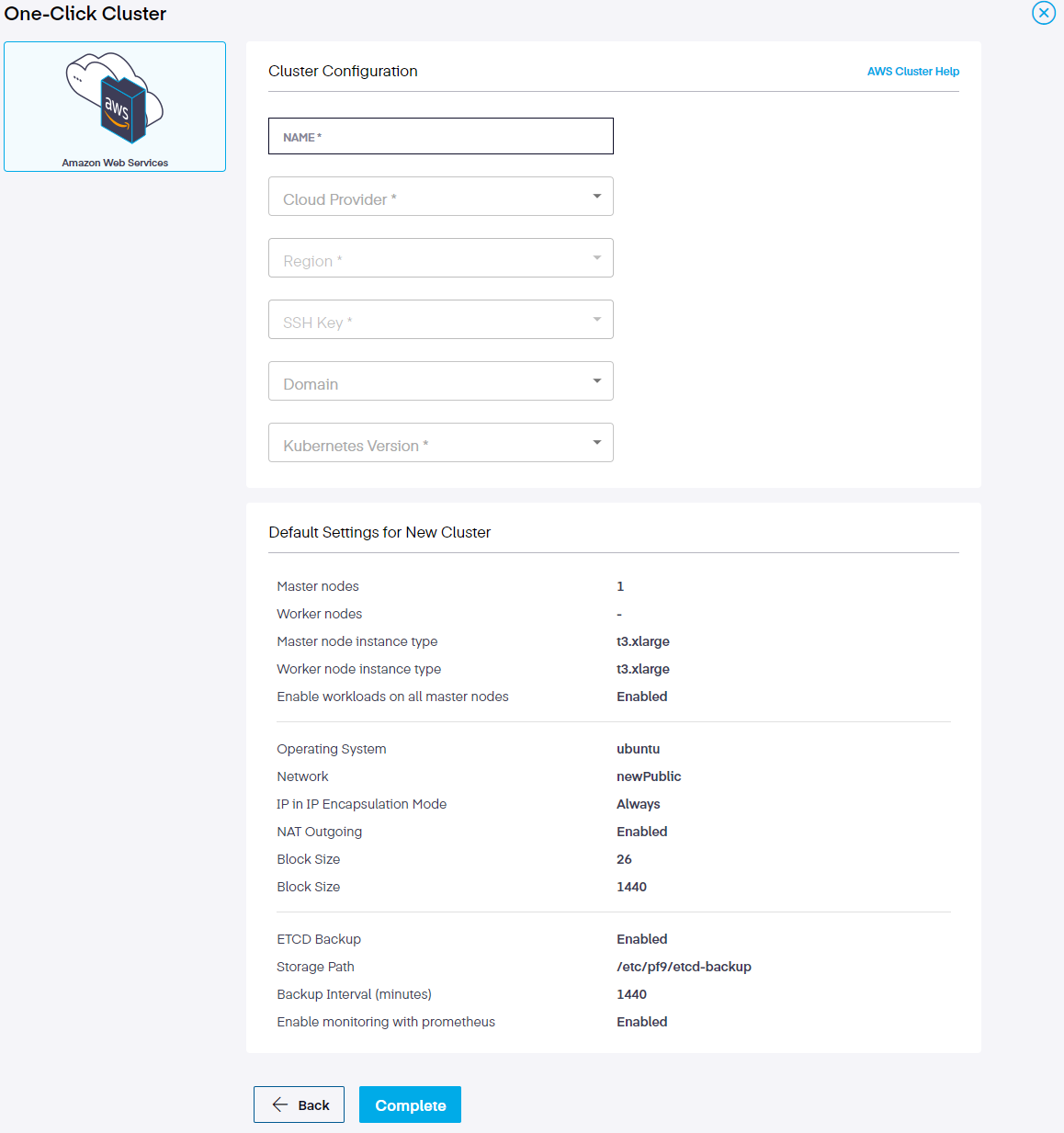
aws-one-click-configure.png
"Complete" to begin the creation of your new cluster.

aws-one-click-submitting.png
The Platform9 system will create a single EC2 instance, promote it to be a Kubernetes master node, and enable your workloads to run on it. Routing will be automatically configured as well as full observability.
After creation successfully initializes, you will be directed to the "Node Health" tab where you can watch the progress.
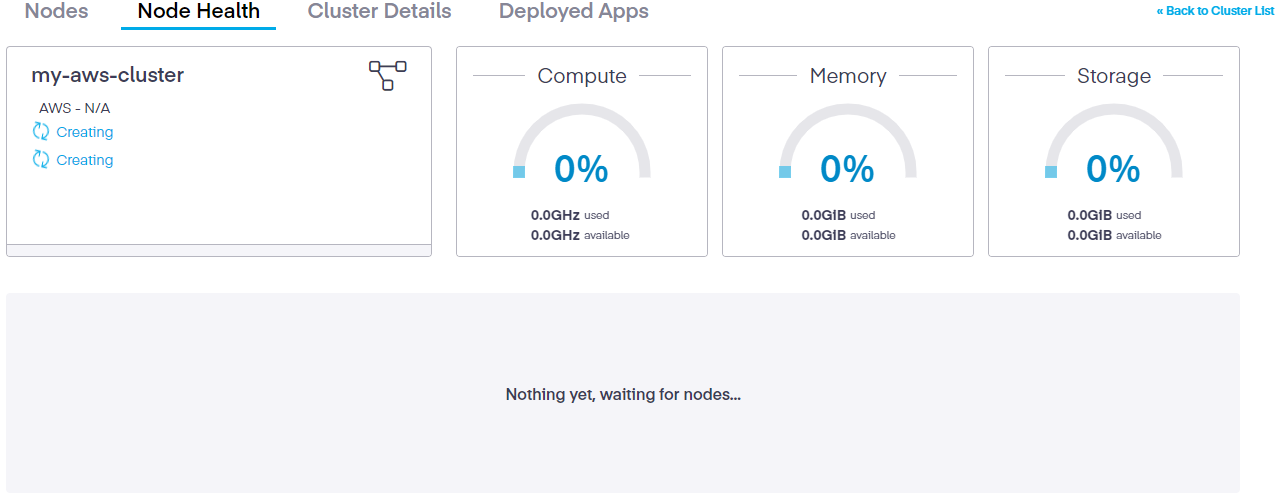
aws-node-health-creating.png
As the deployment progresses, the screen will update with steps completed and a final message of "Connected" and "Healthy".
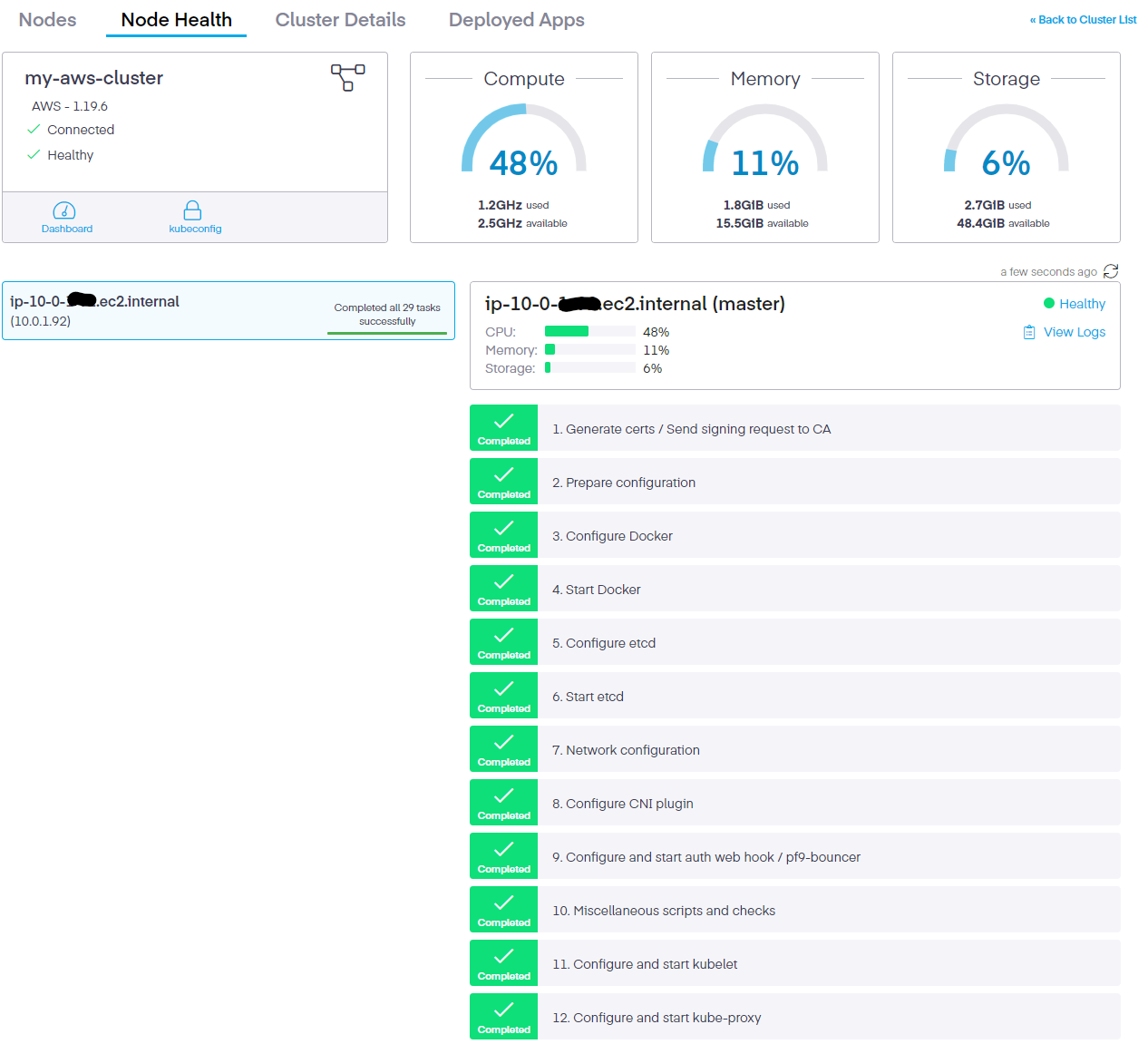
aws-one-click-finished.png
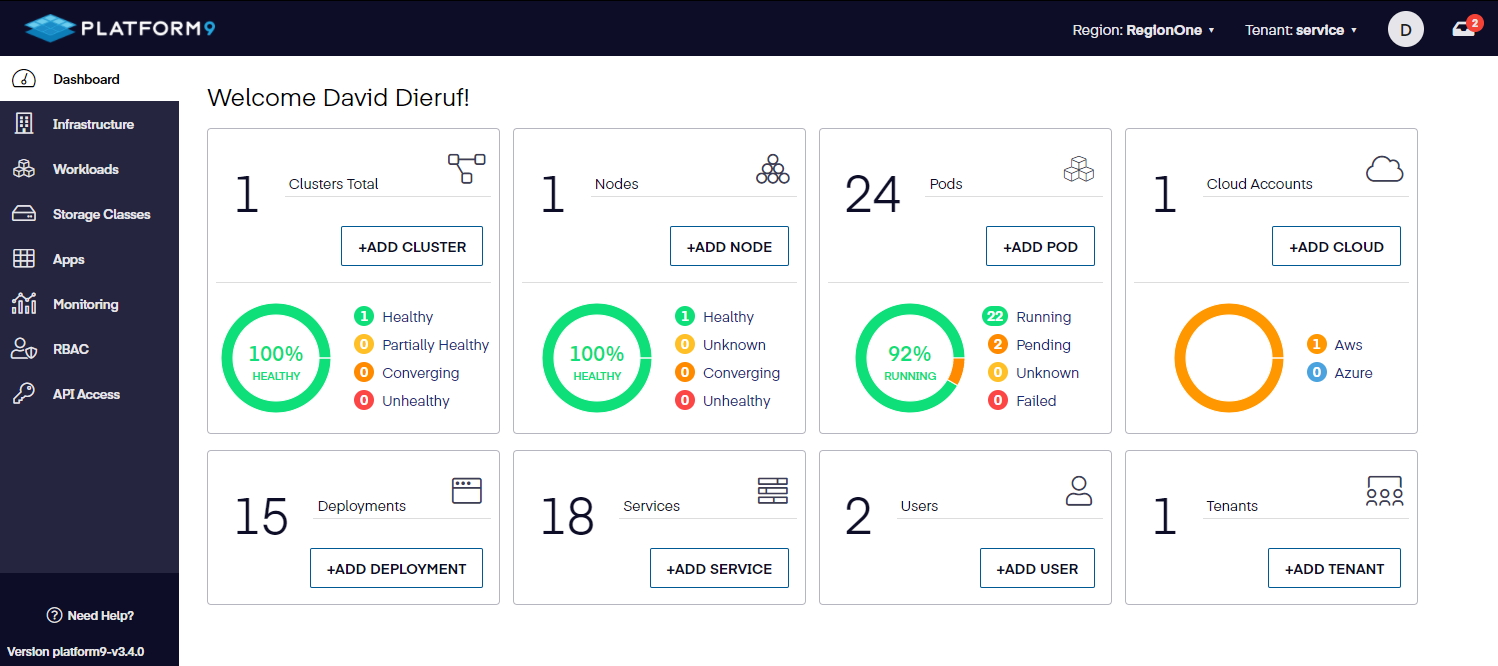
dashboard-1-cluster.png
Navigate back to your dashboard to see a summary of the new management plane.
Removing a One-Click Cluster From Your AWS Account
- Navigate to the "Infrastructure" area.
- Choose the "Clusters" tab.
- Select the cluster to remove and click the "Delete" icon.
It will take a few minutes to terminate the EC2 instance running as the Kubernetes master. In the "Nodes" tab, the associated instance will automatically remove after termination.